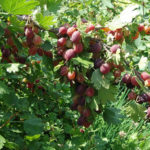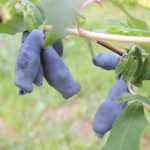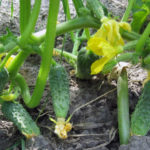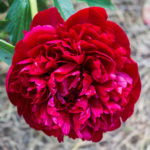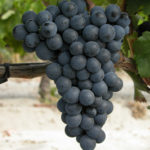Hydrangea paniculata Wim's red (Wim's red)
Avid florists are constantly replenishing their collection of ornamental plants. And most of them pay attention, first of all, to the varieties that stand out from the total mass. If you are just such a lover of flowering crops, then do not pass by the variety of panicle hydrangea called Weems ed. She has many advantages and will become a bright star in your flower garden.
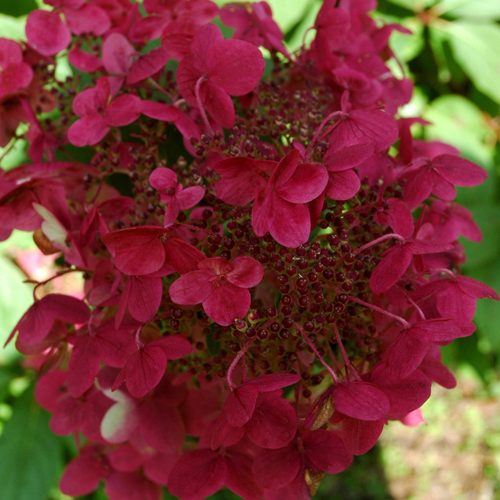
History of origin
Wim's red was brought out only a few years ago, but it has already managed to acquire a sufficient number of fans and become widely known. An unusual plant appeared thanks to the works of the German breeder Wim Rutten. It is easy to understand that the variety bears the name of its creator. The second part of the name of the hydrangea indicates the color of the inflorescences: “red” in English means “red”.
Description of appearance and features
Weems red is a spreading deciduous shrub, reaching a maximum height of 1.5 meters. It is distinguished by uniform growth, compact size, the presence of flexible, strong, erect shoots, on which elongated, ovoid, dark green leaves develop, which turn yellow with the onset of autumn. Branches are noticeable here and there on the stems of the shrub. The shoots themselves have a brownish-red hue and sometimes bend during the flowering phase of the culture, but they certainly do not break under the weight of lush inflorescences. The arrangement of leaves on the shoots of hydrangea is opposite. The foliage of the plant is tough, dense, with pronounced venation and rather impressive size (10-12 cm in length).

In June, the first inflorescences appear on the bush: snow-white, large (35-40 cm in height), in the form of a cone. By the end of summer, the former color scheme is replaced by pink. And with the arrival of September, the inflorescences acquire a rich burgundy-red hue. Wim's red bloom is long-lasting - it lasts until the October frost. Bright inflorescences consist of small fertile and large sterile flowers (up to 7 cm in diameter), exuding a light pleasant aroma with honey notes. Hydrangea fruits are boxes with small seeds inside, which can be used for breeding the variety. The culture blooms in the year of planting.
Weems red is a hardy plant. It can withstand frosts down to -35 ° C. This is a long-lived variety. It is able to please the eye for 40 years, blooming annually. In some cases, the plant lives longer, up to a maximum of 60 years. It has an average resistance to diseases and pests.
Growing conditions and care
Ideal for placing this variety of panicle hydrangea is a place in partial shade. Direct sunlight and cold drafts can damage the beauty.
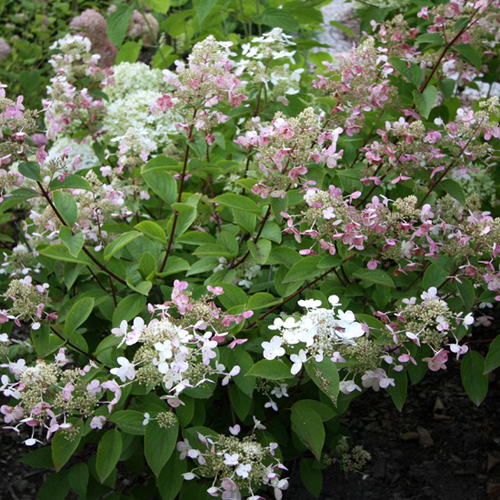
The soil for the culture should be chosen fertile, with good air and water permeability. You can buy specialized soil in the store, but it will not be difficult to prepare it yourself from 2 parts of leafy soil, the same amount of humus, 1 part of sand and 1 part of peat. The variety grows well in acidic and slightly acidic soil. It also transfers neutral soil. But the alkaline soils of Weems Red are not suitable at all.
The flower is planted in the spring. If you live in the southern region, autumn is also suitable for this event. Dig a hole with a depth and width of 30 cm. Fill it with 1/3 of the peat and the same amount of humus. Lay an expanded clay drainage layer. When planting, leave the root collar of the plant above the soil. Immediately after this procedure, water the seedling with soft water at room temperature. When planting, maintain a distance of 1 meter between plants.Do not place the crop next to other shrubs and trees, or your hydrangea will suffer from constant moisture loss.
The flower needs regular watering. Use standing, not cold water. During the entire period of active growth, water Weems Red 1-2 times a week, using about 30 liters of water per 1 square meter of soil. The next day after moistening the soil, it is required to loosen it.
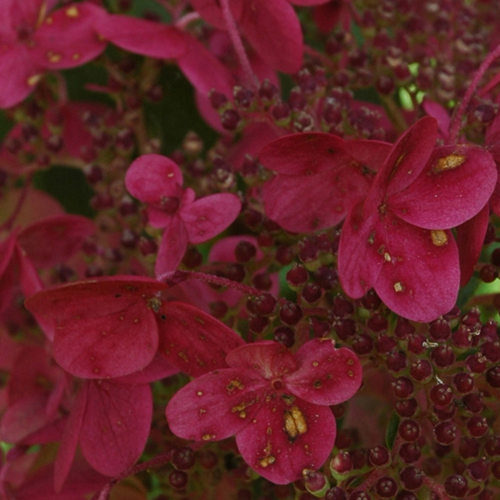
Also, fertilizing is included in the Wim's red care plan. They start from the end of spring. During this period, an organic fertilizer rich in nitrogen is applied under the flower (an aqueous solution of a mullein, for example). This contributes to the growth of green mass. Then they switch to mineral complexes with a predominance of phosphorus and potassium in them - to ensure the normal laying of buds and the lush flowering of hydrangeas. The frequency of top dressing is 1 time in 10-15 days.
Useful for shrubs and soil mulching in the area of the trunk circle. Needles, fallen leaves, peat, moss, sawdust are used as mulch. This will keep moisture in the soil under the flower longer.
We recommend pruning Weems ed twice a year. In the spring, before the leaves appear, weak branches should be removed, while strong shoots should be cut to several buds. If the bush is too old, it is subjected to rejuvenating pruning, leaving only 5-6 of last year's strongest branches on the crop. During flowering, faded and wilted inflorescences are removed. In the fall, before the onset of cold weather, Wim's red gets rid of sick and dry shoots.
Young hydrangea is sheltered for the winter up to four years of age. To do this, use plastic wrap, fallen leaves, spruce branches.
Weems red is affected by white rot, from which Fitosporin saves. In addition, the cultivar can fall prey to powdery mildew and chlorosis. To avoid the appearance of such troubles, spray the plant with a fungicide solution 2-3 times per season for prophylaxis.
Use cases
A shrub with bright flowers can be placed separately, or in groups with other decorative flowering plants - in any case, it will look just gorgeous. This hydrangea variety goes well with coniferous and evergreen crops. Its place is in hedges, contrasting flower beds, mixborders. Weems red is also used to decorate garden alleys, gazebos, front gardens.
